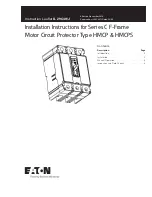
Mounting and Commissioning
3.3 Commissioning
SIPROTEC, 7SD5, Manual
C53000-G1176-C169-5, Release date 02.2011
545
3.3.6
Checking for Breaker Failure Protection
General
If the device is equipped with the breaker failure protection and this function is used, the integration of this pro-
tection function into the system must be tested under practical conditions.
Because of the manifold applications and various configuration possibilities of the plant it is not possible to give
a detailed description of the necessary test steps. It is important to consider the local conditions and the pro-
tection and plant drawings.
Before starting the circuit tests it is recommended to isolate the circuit breaker of the feeder to be tested at both
ends, i.e. line disconnectors and busbar disconnectors should be open so that the breaker can be operated
without risk.
Caution!
Also for tests on the local circuit breaker of the feeder a trip command to the surrounding circuit breakers can
be issued for the busbar.
Non-observance of the following measure can result in minor personal injury or property damage.
First disable the trip commands to the adjacent (busbar) breakers, e.g. by interrupting the associated control
voltages.
Before the breaker is closed again for normal operation the trip command of the feeder protection routed to the
circuit breaker must be disconnected so that the trip command can only be initiated by the breaker failure pro-
tection.
Although the following list does not claim to be complete, it may also contain points which are to be ignored in
the current application.
Auxiliary Contacts of the CB
The circuit breaker auxiliary contact(s) form an essential part of the breaker failure protection system in case
they have been connected to the device. Make sure the correct assignment has been checked.
External Initiation Conditions
If the breaker failure protection can also be started by external protection devices, the external start conditions
are checked. Depending on the device version and the setting of the breaker failure protection, 1-pole or 3-pole
trip are possible. The pole discrepancy check of the device or the actual breaker may lead to 3-pole tripping
after 1-pole tripping. Therefore check first how the parameters of the breaker failure protection are set. See also
Section 2.22.2, addresses
3901
onwards.
In order for the breaker failure protection to be started, a current must flow at least through the monitored phase
and the earth. This may be a secondary injected current.
After every start the indication
„BF Start“
(no. 1461) must appear in the spontaneous or fault indications.
If only 1-pole initiation is possible:
• Start by 1-pole trip command of the external protection L1:
Binary input functions
„>BF Start L1“
and, if necessary,
„>BF release“
(in spontaneous or fault indi-
cations). Trip command (depending on settings).
• Start by 1-pole trip command of the external protection L2:
Binary input functions
„>BF Start L2“
and, if necessary,
„>BF release“
(in spontaneous or fault indi-
cations). Trip command (depending on settings).
















































